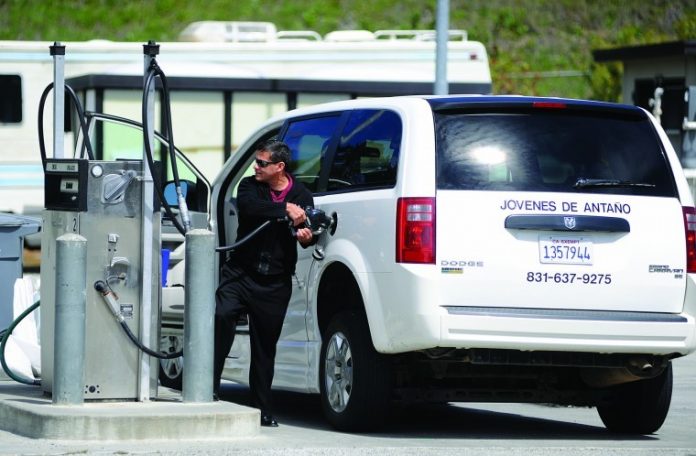Several projected increases in motor transportation costs pose a direct threat to the economic well-being of San Benito County. The increases could be led by a jump in motor vehicle fuel prices as part of a carbon cap-and-trade proposal, a state mileage charge to offset the loss of gas tax revenue due to more fuel-efficient vehicles, and the construction of more public and private toll roads instead of “freeways.”
Taken together these measures will dramatically boost the cost of motor transportation, and that will have a disproportional negative impact on rural and/or bedroom communities like ours. Whether it’s fertilizers to farmers, vegetables to market or especially commuters to and from work, transportation costs are a key component in our local economic equation.
San Benito relies heavily on earnings brought in by commuters from other counties. According to the U.S. Bureau of Economic Analysis the 2012 county earnings inflow – mostly from commuters – was $833 million. On a per-capita basis they were the highest in the six-county area; $14,600 for every resident. Santa Cruz was second with $13,600, followed by Santa Clara at $6,800, Merced at $3,800, Monterey at $2,700, and Fresno at $1,500. Earnings include wage and salaries, supplements, and proprietors’ income.
In addition to higher pay opportunities the reason commuters are especially crucial to our economic health is San Benito’s low proportion of in-county jobs. As a percent of population, in-county jobs were among the lowest in the region.
Santa Clara jobs equaled 65% of their population in 2012. That is a higher percentage than their resident workforce; therefore, Santa Clara imports workers and outflows earnings to the tune of $29.5 billion a year (yes, that is billions). Both Santa Cruz and Monterey have in-county jobs equal to about 53% of their populations, with Fresno at 46%, but San Benito was only 37%, slightly ahead of Merced at 35%.
Five-year (2006-2010) studies by the U.S. Census estimated an annual residence county-to-workplace county flow of 23,907 for San Benito County; 12,213 (51%) were to in-county workplaces and 11,694 (49%) were to out-of-county workplaces. On the other hand, inflows to San Benito County were less than 4,500.
About 63% of the out-of-county trips were to Santa Clara, 25% to Monterey, and 7% to Santa Cruz counties. Together the three account for 95% of all out- of-county workplace trips.
A sharp rise in transportation costs will immediately reduce discretionary income for commuters and eventually reduce the city’s sales tax take. As with many bedroom communities, taxes on gasoline are a major source of government revenue.
The current taxes and fees included in the retail price of a gallon of gasoline motor fuel at a service station under California’s fuel tax swap formula is complex and expensive. It includes an 18.4-cent Federal Fuel Tax, a 36.0-cent State Fuel Tax, and a 1.4-cent “Underground Storage Tank Fee” – totaling 55.8 cents a gallon in excise taxes and fees alone. Additionally, there is a 2.25% sales tax rate, and any local district taxes, 1% for the City of Hollister. Assuming gas sells for $4 a gallon locally, the tax portion totals 68.4 cents; an effective tax rate of over 20%.
California state gas taxes are probably the second highest in the nation; I say probably because unwinding the costs of the excise and offset tax swap system is so complex. There is one thing that is sure – a significant increase in transportation costs is going to wallop our county economy.










